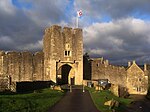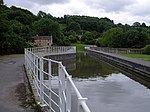Farleigh House

Farleigh House, or Farleigh Castle, sometimes called Farleigh New Castle, is a large English country house in the county of Somerset, formerly the centre of the Farleigh Hungerford estate. Much of the stone to build it came from the nearby Farleigh Hungerford Castle and the house is now a Grade II listed building.Farleigh House was built and extended during the 18th and 19th centuries and until 1970 served as the centre of a country estate owned by the Houlton family until 1899, then by others. In 1970 it was sold to be used as a prep school called Ravenscroft School. After this closed in 1996, the house was leased from the last owners of the school by the new Farleigh College until 2001, and it was then sold to Inspecs, a manufacturer of optical instruments. In 2010 a 99-year lease was acquired by Bath Rugby Club, which now occupies it as its headquarters and training centre.
Excerpt from the Wikipedia article Farleigh House (License: CC BY-SA 3.0, Authors, Images).Farleigh House
A366, Mendip Norton St Philip
Geographical coordinates (GPS) Address Website Nearby Places Show on map
Geographical coordinates (GPS)
| Latitude | Longitude |
|---|---|
| N 51.31715 ° | E -2.28836 ° |
Address
Hungerford Arms
A366
BA2 7RX Mendip, Norton St Philip
England, United Kingdom
Open on Google Maps










